Procurement 101: Supplier Chain Analysis – Practical Guide to Leveraging Technology
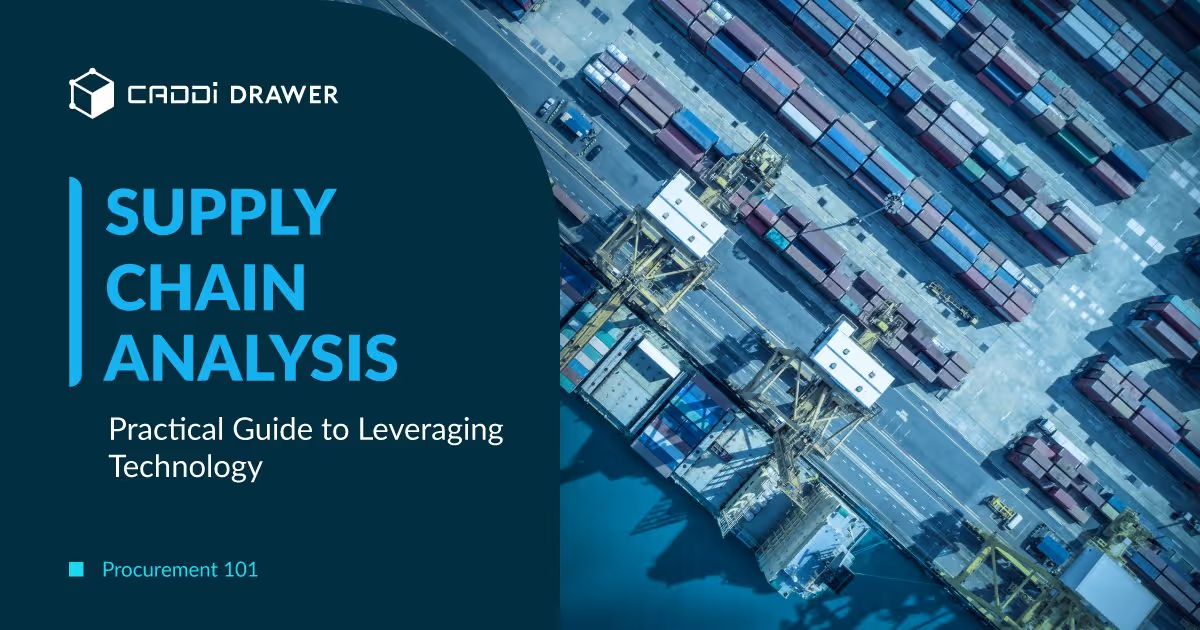
Table of Contents

Key Components of Supply Chain Analysis
Imagine your supply chain as a complex puzzle, with each piece representing a critical process or data point. Supply chain analysis is the key to putting these pieces together, revealing a clear picture of your operations and uncovering opportunities for optimization. But what exactly does this analysis entail? Let’s dive into the key components.
Descriptive Analytics: Painting a Picture of Your Supply Chain
Descriptive analytics provides a comprehensive view of your supply chain by integrating data from both internal and external sources. It’s like creating a detailed map of your operations, highlighting patterns, trends, and potential bottlenecks. This type of analysis helps you:
- Understand the current state of your supply chain
- Identify areas of inefficiency or excess cost
- Establish a reliable, single source of truth for decision-making
Predictive Analytics: Glimpsing into the Future
Predictive analytics takes your supply chain data and uses it to forecast future scenarios and their potential impact on your business. It’s like having a crystal ball that allows you to anticipate disruptions, risks, and opportunities. With predictive analytics, you can:
- Forecast demand with greater accuracy
- Identify potential supply chain disruptions before they occur
- Optimize inventory levels and production planning
Prescriptive Analytics: Charting the Best Course of Action
Prescriptive analytics goes beyond prediction by recommending specific actions to maximize business value and minimize risk. It’s like having a trusted advisor guiding you through complex supply chain decisions. Prescriptive analytics enables you to:
- Evaluate multiple scenarios and their potential outcomes
- Identify the optimal course of action based on your business goals
- Collaborate more effectively with supply chain partners
Cognitive Analytics: Harnessing the Power of AI
Cognitive analytics leverages AI to process vast amounts of structured and unstructured data, providing human-like insights and recommendations. It’s like having a team of expert analysts working 24/7 to optimize your supply chain. With cognitive analytics, you can:
- Analyze complex, unstructured data like social media posts and customer feedback
- Identify hidden patterns and relationships in your supply chain data
- Continuously learn and adapt to changing business conditions
By leveraging these key components of supply chain analysis, you can gain a holistic view of your operations, anticipate and mitigate risks, and make data-driven decisions that drive efficiency, resilience, and growth. Don’t let your supply chain remain a mystery – unlock its potential with the power of analytics.
Key Factors for Successful Supply Chain Analysis Execution
To successfully execute supply chain analysis and realize its full potential, several critical factors must be considered. These key elements form the foundation for effective, data-driven decision-making and continuous improvement.
Data Integration and Quality: A robust supply chain analysis relies on the integration of data from multiple sources, both internal and external. Ensuring data quality, consistency, and accuracy across these sources is essential for generating reliable insights. Investing in data management tools and processes is crucial for success.
Collaboration and Communication: Supply chain analysis often involves multiple stakeholders, including internal departments, suppliers, and customers. Fostering a culture of collaboration and open communication is vital for aligning goals, sharing insights, and driving continuous improvement. Regular meetings, shared dashboards, and clear communication channels are essential.
Technology and Analytics Infrastructure: Implementing supply chain analysis requires a strong technology and analytics infrastructure. This includes investing in data warehousing, business intelligence tools, and advanced analytics platforms. Cloud-based solutions can provide scalability and flexibility, while AI and machine learning capabilities can enable more sophisticated analysis.
Skilled Talent: Successful supply chain analysis relies on a team of skilled professionals, including data scientists, analysts, and domain experts. Investing in talent acquisition, development, and retention is crucial for building and maintaining a high-performing analytics team. Providing ongoing training and opportunities for growth can help keep skills sharp and foster innovation.
Executive Support and Alignment: Supply chain analysis initiatives require executive support and alignment with overall business strategy. Leaders must understand the value of analytics and be willing to invest in the necessary resources and infrastructure. Aligning analysis with key business objectives and metrics is essential for demonstrating value and driving adoption.
Continuous Improvement and Agility: Supply chain analysis is not a one-time effort, but rather a continuous process of learning and adaptation. Embracing a culture of continuous improvement, experimentation, and agility is crucial for staying ahead of changing business conditions and customer needs. Regularly reviewing and refining analysis processes, models, and assumptions is essential for long-term success.
A Step-by-step Guide to Leveraging Technology in Supply Chain Analysis
Imagine you’re the newly appointed Supply Chain Manager at FutureTech, a growing electronics manufacturer. Your first task is to optimize the company’s supply chain using data-driven insights. Where do you begin? Let’s embark on a step-by-step journey to leverage technology in your supply chain analysis implementation and execution.
1. Define Your Objectives and KPIs
- Identify the key areas you want to optimize (e.g., cost reduction, lead time, inventory management)
- Establish clear, measurable KPIs aligned with your business goals
When defining your objectives and KPIs, it’s crucial to ensure they are specific, measurable, achievable, relevant, and time-bound (SMART). This will help you stay focused and track progress effectively. Align your KPIs with your overall business strategy to ensure supply chain initiatives contribute to the company’s success.
Avoid setting too many KPIs, as this can dilute focus and create confusion. Regularly review and adjust your KPIs as business needs change to maintain relevance and effectiveness.
2. Assess Your Current Technology Landscape
- Evaluate your existing supply chain management systems (e.g., ERP, WMS, TMS)
- Identify data silos and integration gaps
- Consider cloud-based solutions for scalability and flexibility
When assessing your current technology landscape, identify any gaps that may hinder your supply chain analytics efforts. Legacy systems can often limit your analytics capabilities, so avoid the “if it ain’t broke, don’t fix it” mentality. Instead, consider the scalability and flexibility of your current systems to accommodate future growth. Develop a roadmap for technology modernization and integration to ensure your infrastructure can support your analytics goals.
3. Implement a Robust Data Integration Strategy
- Invest in data integration tools (e.g., Mulesoft, Talend, Boomi) to connect disparate systems
- Establish data governance policies to ensure data quality and consistency
- Create a centralized data warehouse or data lake to store and manage supply chain data
Implementing a robust data integration strategy is essential for effective supply chain analytics. Ensure data consistency and accuracy across all sources to avoid “garbage in, garbage out” scenarios. Establish clear data governance policies and procedures to maintain data quality over time.
Choose data integration tools that can handle both structured and unstructured data. Avoid creating data silos that can hinder collaboration and insights by creating a centralized data warehouse or data lake.
4. Leverage Advanced Analytics and AI
- Utilize business intelligence tools (e.g., Tableau, Power BI, Qlik) for data visualization and reporting
- Implement predictive analytics to forecast demand, optimize inventory, and identify potential disruptions
- Explore AI and machine learning platforms (e.g., DataRobot, H2O.ai, Google Cloud AI) and procurement intelligence tools (e.g., CADDi Drawer), for advanced insights
When leveraging advanced analytics and AI, start with a clear understanding of the business problems you want to solve. Ensure you have the right talent and skills in place to implement and manage these technologies effectively.
Avoid the “black box” effect by ensuring your models and algorithms are transparent and explainable. Continuously monitor and validate your models to avoid drift and maintain accuracy.
5. Streamline Supplier Management
- Implement a supplier relationship management (SRM) system (e.g., SAP Ariba, Oracle Supplier Management) to centralize supplier information and performance metrics
- Leverage e-sourcing tools (e.g., Coupa, Jaggaer) to automate the supplier selection process and negotiate better contracts
- Use supplier risk management tools (e.g., Resilinc, riskmethods) to monitor and mitigate supply chain risks
To streamline supplier management, ensure your supplier management system integrates seamlessly with your other supply chain tools. Establish clear performance metrics and KPIs for your suppliers to track and manage their performance effectively. Diversify your supplier base to mitigate risk, and avoid over-reliance on a single supplier.
Regularly review and optimize your supplier contracts and relationships to ensure they align with your business goals and market conditions.
6. Embrace Collaboration and Visibility
- Implement a supply chain collaboration platform (e.g., E2open, Infor Nexus) to facilitate communication and information sharing with suppliers and partners
- Utilize IoT sensors and RFID technology to enable real-time tracking and visibility across the supply chain
Embracing collaboration and visibility is key to successful supply chain analytics. Foster a culture of trust and transparency with your supply chain partners to encourage open communication and information sharing.
Ensure your collaboration platform is user-friendly and accessible to all stakeholders. Avoid information overload by focusing on sharing actionable insights rather than raw data. Establish clear communication channels and protocols to facilitate effective collaboration.
7. Foster a Data-Driven Culture
- Provide training and support to help employees embrace data-driven decision-making
- Encourage cross-functional collaboration and knowledge sharing
- Celebrate successes and learn from failures to continuously improve your supply chain analytics
Fostering a data-driven culture is essential for the success of your supply chain analytics initiatives. Lead by example and demonstrate the value of data-driven decision-making at all levels of the organization.
Provide ongoing training and support to help employees develop data literacy skills. Avoid the “data rich, information poor” trap by ensuring insights are actionable and aligned with business goals. Celebrate data-driven successes and learn from failures to continuously improve your analytics processes.
8. Monitor, Measure, and Optimize
- Regularly review your supply chain analytics initiatives against your defined KPIs
- Continuously refine your models, algorithms, and processes based on new data and insights
- Stay agile and adapt to changing business needs and market conditions
Monitoring, measuring, and optimizing your supply chain analytics initiatives is an ongoing process. Establish a regular cadence for reviewing your initiatives against your defined KPIs. Use a balanced scorecard approach to measure success across multiple dimensions (e.g., financial, operational, customer).
Avoid the “set it and forget it” mentality by continuously monitoring and adjusting your strategies as needed. Embrace a culture of continuous improvement and experimentation to stay agile and adapt to changing business needs and market conditions.
Conclusion
Unlock the full potential of your supply chain with advanced analytics and cutting-edge technology. By following these practical steps and leveraging the right tools, you can drive efficiency, resilience, and competitive advantage in today’s dynamic business landscape.
Key Components of Supply Chain Analysis
Imagine your supply chain as a complex puzzle, with each piece representing a critical process or data point. Supply chain analysis is the key to putting these pieces together, revealing a clear picture of your operations and uncovering opportunities for optimization. But what exactly does this analysis entail? Let’s dive into the key components.
Descriptive Analytics: Painting a Picture of Your Supply Chain
Descriptive analytics provides a comprehensive view of your supply chain by integrating data from both internal and external sources. It’s like creating a detailed map of your operations, highlighting patterns, trends, and potential bottlenecks. This type of analysis helps you:
- Understand the current state of your supply chain
- Identify areas of inefficiency or excess cost
- Establish a reliable, single source of truth for decision-making
Predictive Analytics: Glimpsing into the Future
Predictive analytics takes your supply chain data and uses it to forecast future scenarios and their potential impact on your business. It’s like having a crystal ball that allows you to anticipate disruptions, risks, and opportunities. With predictive analytics, you can:
- Forecast demand with greater accuracy
- Identify potential supply chain disruptions before they occur
- Optimize inventory levels and production planning
Prescriptive Analytics: Charting the Best Course of Action
Prescriptive analytics goes beyond prediction by recommending specific actions to maximize business value and minimize risk. It’s like having a trusted advisor guiding you through complex supply chain decisions. Prescriptive analytics enables you to:
- Evaluate multiple scenarios and their potential outcomes
- Identify the optimal course of action based on your business goals
- Collaborate more effectively with supply chain partners
Cognitive Analytics: Harnessing the Power of AI
Cognitive analytics leverages AI to process vast amounts of structured and unstructured data, providing human-like insights and recommendations. It’s like having a team of expert analysts working 24/7 to optimize your supply chain. With cognitive analytics, you can:
- Analyze complex, unstructured data like social media posts and customer feedback
- Identify hidden patterns and relationships in your supply chain data
- Continuously learn and adapt to changing business conditions
By leveraging these key components of supply chain analysis, you can gain a holistic view of your operations, anticipate and mitigate risks, and make data-driven decisions that drive efficiency, resilience, and growth. Don’t let your supply chain remain a mystery – unlock its potential with the power of analytics.
Key Factors for Successful Supply Chain Analysis Execution
To successfully execute supply chain analysis and realize its full potential, several critical factors must be considered. These key elements form the foundation for effective, data-driven decision-making and continuous improvement.
Data Integration and Quality: A robust supply chain analysis relies on the integration of data from multiple sources, both internal and external. Ensuring data quality, consistency, and accuracy across these sources is essential for generating reliable insights. Investing in data management tools and processes is crucial for success.
Collaboration and Communication: Supply chain analysis often involves multiple stakeholders, including internal departments, suppliers, and customers. Fostering a culture of collaboration and open communication is vital for aligning goals, sharing insights, and driving continuous improvement. Regular meetings, shared dashboards, and clear communication channels are essential.
Technology and Analytics Infrastructure: Implementing supply chain analysis requires a strong technology and analytics infrastructure. This includes investing in data warehousing, business intelligence tools, and advanced analytics platforms. Cloud-based solutions can provide scalability and flexibility, while AI and machine learning capabilities can enable more sophisticated analysis.
Skilled Talent: Successful supply chain analysis relies on a team of skilled professionals, including data scientists, analysts, and domain experts. Investing in talent acquisition, development, and retention is crucial for building and maintaining a high-performing analytics team. Providing ongoing training and opportunities for growth can help keep skills sharp and foster innovation.
Executive Support and Alignment: Supply chain analysis initiatives require executive support and alignment with overall business strategy. Leaders must understand the value of analytics and be willing to invest in the necessary resources and infrastructure. Aligning analysis with key business objectives and metrics is essential for demonstrating value and driving adoption.
Continuous Improvement and Agility: Supply chain analysis is not a one-time effort, but rather a continuous process of learning and adaptation. Embracing a culture of continuous improvement, experimentation, and agility is crucial for staying ahead of changing business conditions and customer needs. Regularly reviewing and refining analysis processes, models, and assumptions is essential for long-term success.
A Step-by-step Guide to Leveraging Technology in Supply Chain Analysis
Imagine you’re the newly appointed Supply Chain Manager at FutureTech, a growing electronics manufacturer. Your first task is to optimize the company’s supply chain using data-driven insights. Where do you begin? Let’s embark on a step-by-step journey to leverage technology in your supply chain analysis implementation and execution.
1. Define Your Objectives and KPIs
- Identify the key areas you want to optimize (e.g., cost reduction, lead time, inventory management)
- Establish clear, measurable KPIs aligned with your business goals
When defining your objectives and KPIs, it’s crucial to ensure they are specific, measurable, achievable, relevant, and time-bound (SMART). This will help you stay focused and track progress effectively. Align your KPIs with your overall business strategy to ensure supply chain initiatives contribute to the company’s success.
Avoid setting too many KPIs, as this can dilute focus and create confusion. Regularly review and adjust your KPIs as business needs change to maintain relevance and effectiveness.
2. Assess Your Current Technology Landscape
- Evaluate your existing supply chain management systems (e.g., ERP, WMS, TMS)
- Identify data silos and integration gaps
- Consider cloud-based solutions for scalability and flexibility
When assessing your current technology landscape, identify any gaps that may hinder your supply chain analytics efforts. Legacy systems can often limit your analytics capabilities, so avoid the “if it ain’t broke, don’t fix it” mentality. Instead, consider the scalability and flexibility of your current systems to accommodate future growth. Develop a roadmap for technology modernization and integration to ensure your infrastructure can support your analytics goals.
3. Implement a Robust Data Integration Strategy
- Invest in data integration tools (e.g., Mulesoft, Talend, Boomi) to connect disparate systems
- Establish data governance policies to ensure data quality and consistency
- Create a centralized data warehouse or data lake to store and manage supply chain data
Implementing a robust data integration strategy is essential for effective supply chain analytics. Ensure data consistency and accuracy across all sources to avoid “garbage in, garbage out” scenarios. Establish clear data governance policies and procedures to maintain data quality over time.
Choose data integration tools that can handle both structured and unstructured data. Avoid creating data silos that can hinder collaboration and insights by creating a centralized data warehouse or data lake.
4. Leverage Advanced Analytics and AI
- Utilize business intelligence tools (e.g., Tableau, Power BI, Qlik) for data visualization and reporting
- Implement predictive analytics to forecast demand, optimize inventory, and identify potential disruptions
- Explore AI and machine learning platforms (e.g., DataRobot, H2O.ai, Google Cloud AI) and procurement intelligence tools (e.g., CADDi Drawer), for advanced insights
When leveraging advanced analytics and AI, start with a clear understanding of the business problems you want to solve. Ensure you have the right talent and skills in place to implement and manage these technologies effectively.
Avoid the “black box” effect by ensuring your models and algorithms are transparent and explainable. Continuously monitor and validate your models to avoid drift and maintain accuracy.
5. Streamline Supplier Management
- Implement a supplier relationship management (SRM) system (e.g., SAP Ariba, Oracle Supplier Management) to centralize supplier information and performance metrics
- Leverage e-sourcing tools (e.g., Coupa, Jaggaer) to automate the supplier selection process and negotiate better contracts
- Use supplier risk management tools (e.g., Resilinc, riskmethods) to monitor and mitigate supply chain risks
To streamline supplier management, ensure your supplier management system integrates seamlessly with your other supply chain tools. Establish clear performance metrics and KPIs for your suppliers to track and manage their performance effectively. Diversify your supplier base to mitigate risk, and avoid over-reliance on a single supplier.
Regularly review and optimize your supplier contracts and relationships to ensure they align with your business goals and market conditions.
6. Embrace Collaboration and Visibility
- Implement a supply chain collaboration platform (e.g., E2open, Infor Nexus) to facilitate communication and information sharing with suppliers and partners
- Utilize IoT sensors and RFID technology to enable real-time tracking and visibility across the supply chain
Embracing collaboration and visibility is key to successful supply chain analytics. Foster a culture of trust and transparency with your supply chain partners to encourage open communication and information sharing.
Ensure your collaboration platform is user-friendly and accessible to all stakeholders. Avoid information overload by focusing on sharing actionable insights rather than raw data. Establish clear communication channels and protocols to facilitate effective collaboration.
7. Foster a Data-Driven Culture
- Provide training and support to help employees embrace data-driven decision-making
- Encourage cross-functional collaboration and knowledge sharing
- Celebrate successes and learn from failures to continuously improve your supply chain analytics
Fostering a data-driven culture is essential for the success of your supply chain analytics initiatives. Lead by example and demonstrate the value of data-driven decision-making at all levels of the organization.
Provide ongoing training and support to help employees develop data literacy skills. Avoid the “data rich, information poor” trap by ensuring insights are actionable and aligned with business goals. Celebrate data-driven successes and learn from failures to continuously improve your analytics processes.
8. Monitor, Measure, and Optimize
- Regularly review your supply chain analytics initiatives against your defined KPIs
- Continuously refine your models, algorithms, and processes based on new data and insights
- Stay agile and adapt to changing business needs and market conditions
Monitoring, measuring, and optimizing your supply chain analytics initiatives is an ongoing process. Establish a regular cadence for reviewing your initiatives against your defined KPIs. Use a balanced scorecard approach to measure success across multiple dimensions (e.g., financial, operational, customer).
Avoid the “set it and forget it” mentality by continuously monitoring and adjusting your strategies as needed. Embrace a culture of continuous improvement and experimentation to stay agile and adapt to changing business needs and market conditions.
Conclusion
Unlock the full potential of your supply chain with advanced analytics and cutting-edge technology. By following these practical steps and leveraging the right tools, you can drive efficiency, resilience, and competitive advantage in today’s dynamic business landscape.
Ready to see CADDi Drawer in action? Get a personalized demo.
Subscribe to our Blog!
Related Resources
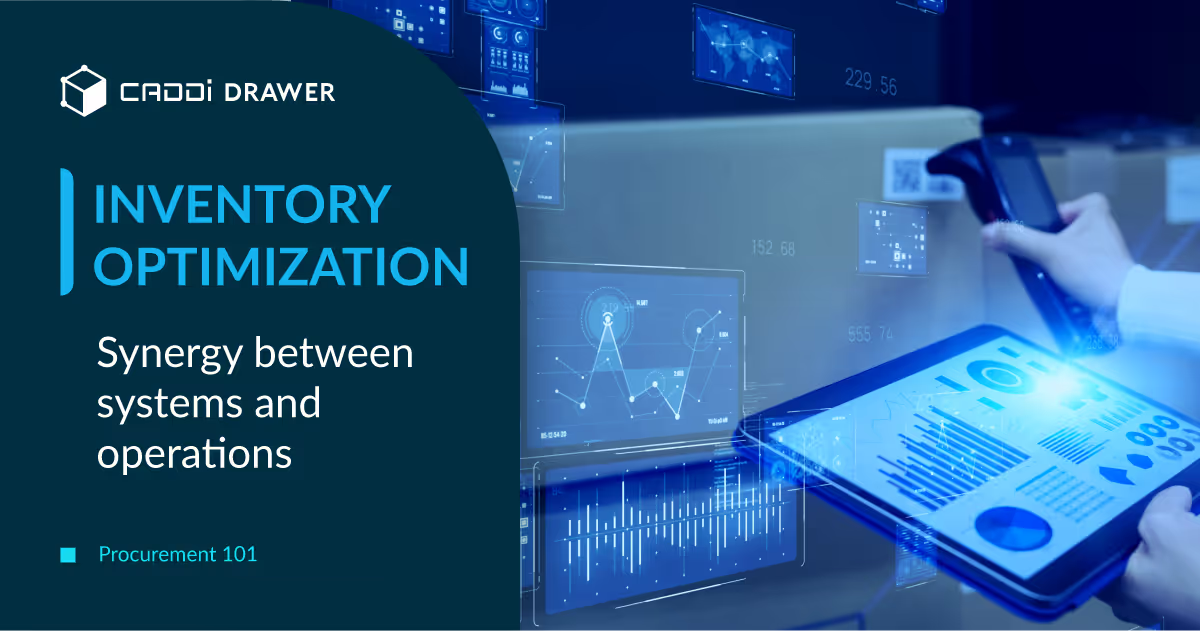





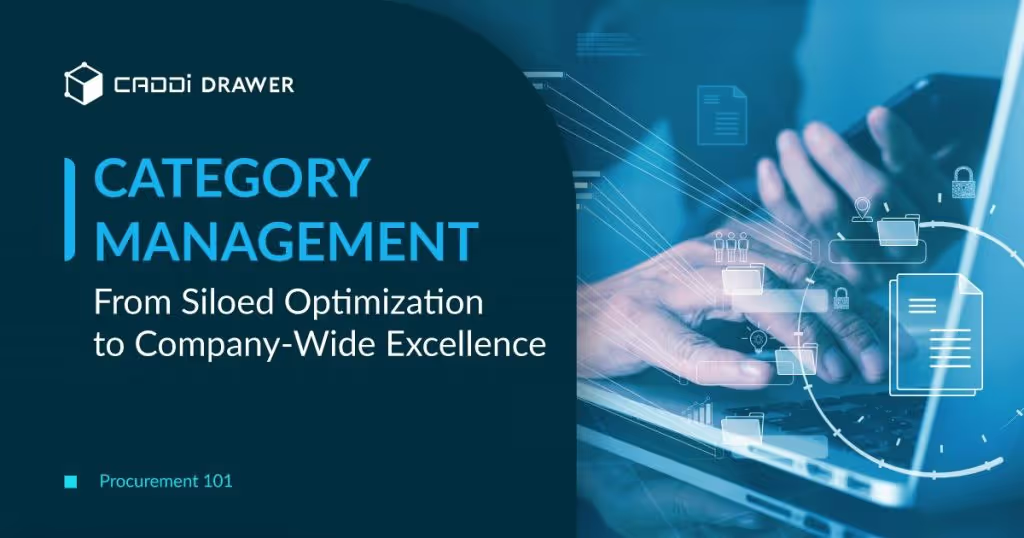

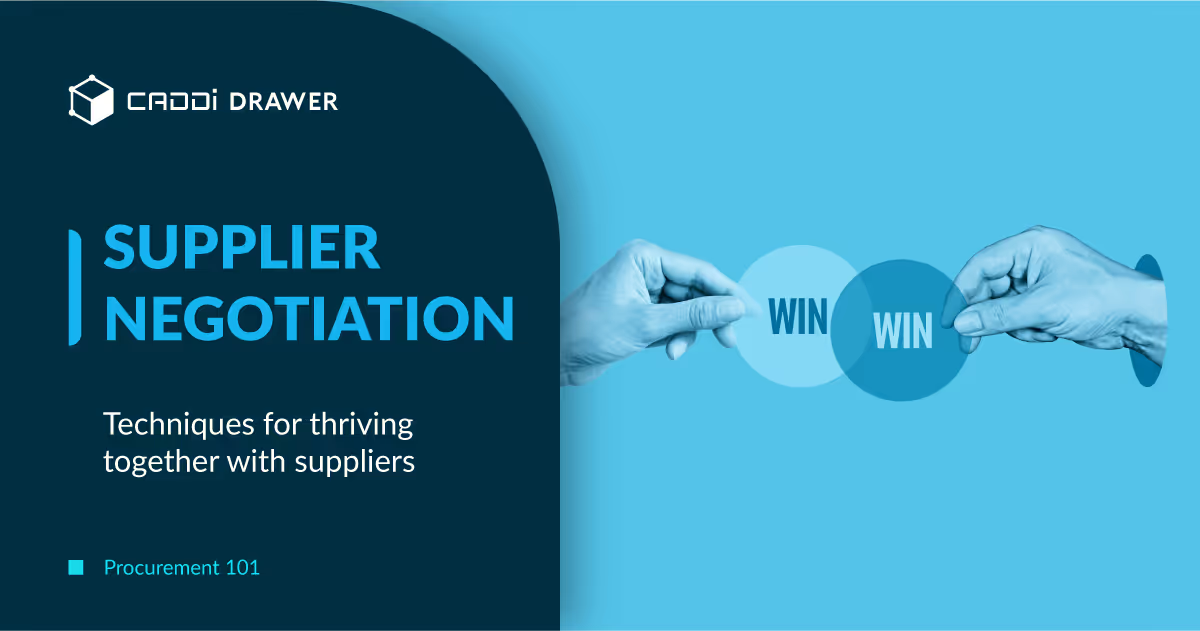

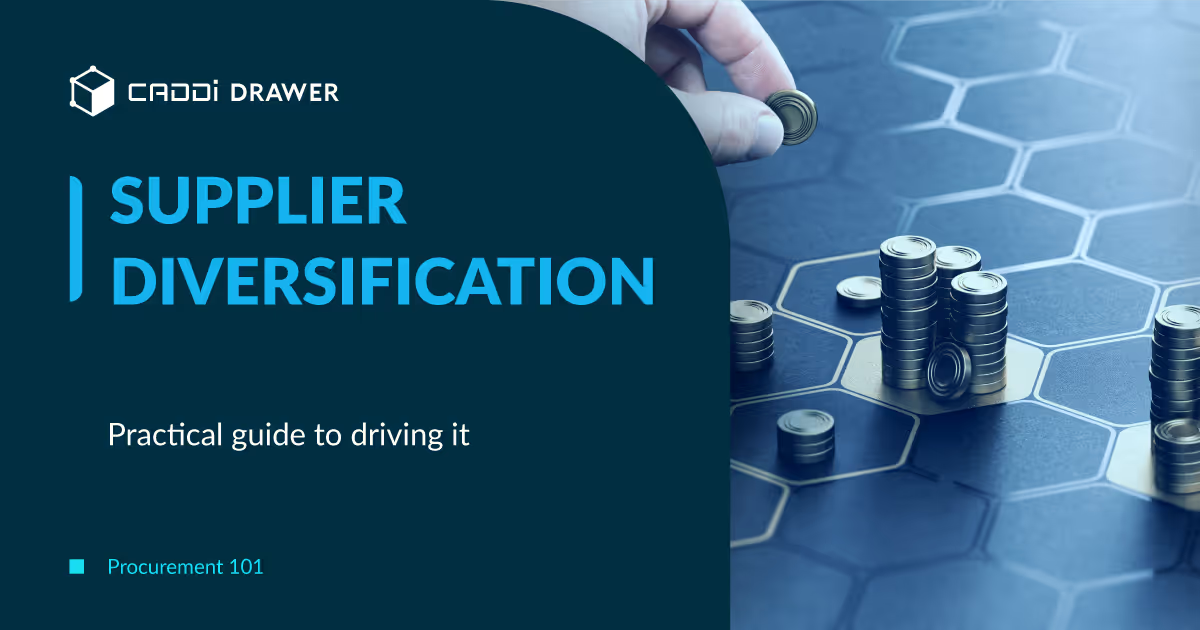

.svg)



.svg)
.svg)
.svg)


